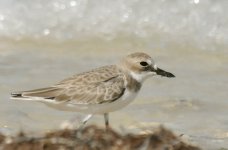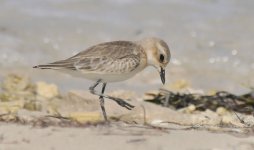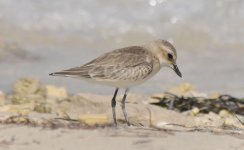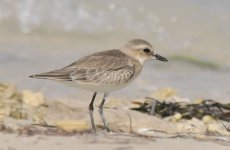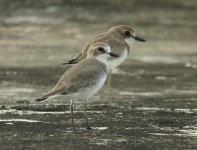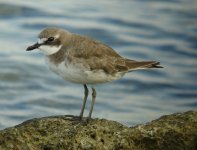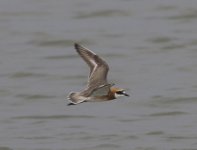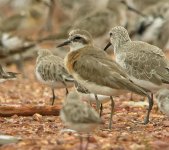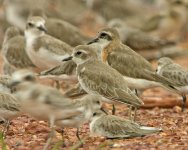Dave B
Well-known member
Martin
Like many I for one appreciate your long and descriptive response to this Forum however I would to seek clarification on your first point that of the moult for Greater Sand Plover. It is a point that I am certain will not change the conclusion. As your arguments on all other points as far as I am concerned outweigh any concerns I have over my query.
Many Greater SP start arriving back here (Bahrain) as early as early July many still retain what I regard as vestiges or remnants of summer plumage - red or tan colour in breast bands in particular. Many Greater stay until November when they move on with only a few wintering by which time of course they have lost any colour associated with summer plumage, ie. have attained full winter plumage.
In post no 19 I attached a recent picture from here of a Greater showing a considerable amount of colour in the chest band, yesterday I photographed another with a slightly less amount of what I regard as retained remnants of summer plumage ie. still shows some colour (see pic attached). I would contend that the amount on the later is equitable with that on the Virgina bird. Maybe I have misinterpreted the definition of remnants of summer plumage I would be interested if you could elaborate further. I have added a second picture of birds from early July (10th) indicating that Greater do move from their breeding ground before undertaking their winter moult
Hi Howard
This is very interesting. Here in Malaysia it is certainly true that Greater Sand Plovers are very rarely seen with any vestiges of breeding plumage remaining on southward migration, In fact, I can only dig out photos of one bird (seen here and photographed on 5th August) among the many thousands I have watched.
There is supposed to be a difference in moult timing between races (columbinus being about two months earlier to moult and breed than the other two, according to Chandler), but that should not make it any easier to see columbinus Greaters in breeding plumage on southward migration I wouldn't have thought.
Of course, any individual can delay/suspend the moult process, so it isn't a watertight argument that a bird in breeding plumage on southward migration cannot be Greater.
Still, I'm surprised you are seeing so many birds with remnants of breeding dress.
Cheers
Dave





